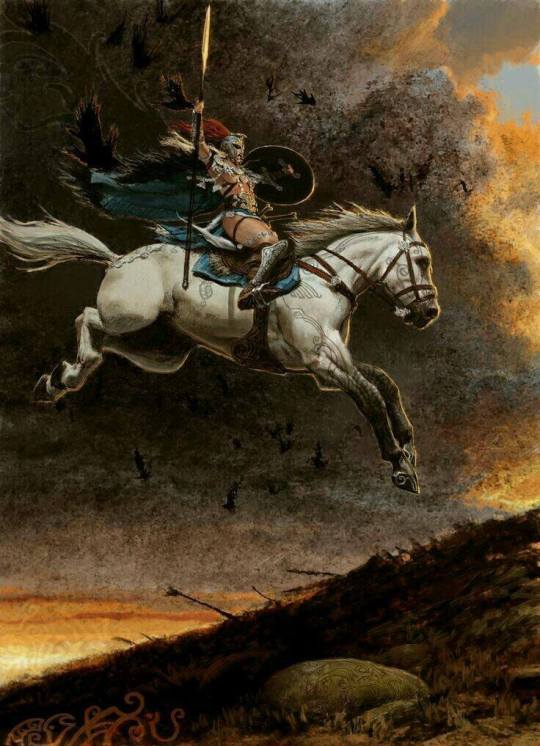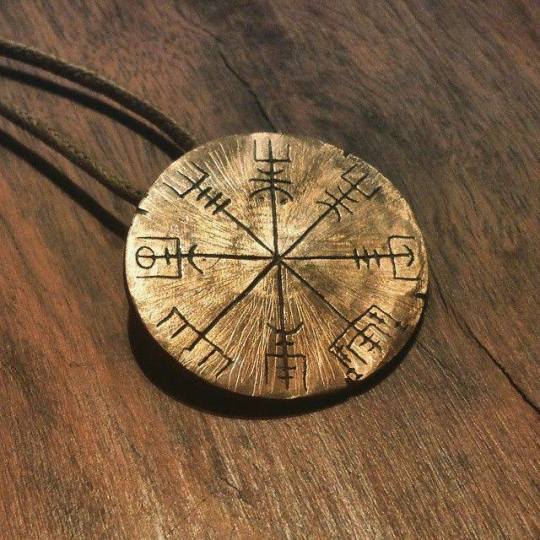#Huld Manuscript
Photo

vegvísir - Aegishjalmur
78 notes
·
View notes
Text



vegvisir...Þjófastafur
1 note
·
View note
Link
Stafir de insignia real, sigilo europeo antiguo para hechizos (para lección de curso online de Galdr o magia nórdica en Udemy). ¿Sabes cuál es?
DM para encargos --> https://www.instagram.com/dani_e_idiomas/
Crédito: Publicado en Instagram, original de Daniel Lucas Hernández (16/1/2023).
NUEVO CURSO DE INTRODUCCIÓN AL GALDR DE LAS RUNAS Y SIGILOS ESCANDINAVOS
Cupón válido hasta el 5 de febrero con el código ENERO2023
¿Quieres un mejor cupón? Envíame un mensaje privado y te haré uno mejor
https://www.instagram.com/dani_e_idiomas/
https://www.udemy.com/course/galdr-simbolos-magicos-escandinavos-runas-y-bindrunes/?couponCode=ENERO2023
#magic#paganism#pagan#insignia#galdr#galdra#galdrastafr#galdrastafur#galdrastafir#Huld Manuscript#Galdrabok#Galdrabók#Galdrakver#black magic#white magic#solar insignia#insignia solar#sello#simbolo#symbol#symbols#Dani E Idiomas#runes#runas#nordic magic#norse#old norse#staves#bindrune#bandrunar
0 notes
Text
I know its a bit late to be ragging on the loki series still but i do think it would have been very funny if ut had a bit where loki travelled back to the 1800s, when neopaganism was taking its first tiny steps, and called bullshit on everything they were doing
#loki flicking through the huld manuscript like 'thats out of context thats wrong thats straight up bullshit idk where you guys got THAT from#loki listening to wagner and looking at (uhh that painting thats on that one bathory album) like girl what IS this#edit. the painting is The Wild Hunt of Odin by peter nicolai arbo (1872)
5 notes
·
View notes
Photo

This bronze rune compass is based on an Icelandic magical symbol called Vegvísir. This roughly translates as 'guidepost' and the Huld Manuscript states: 'if this sign is carried, one will never lose one's way...'
Available here: Bronze Rune Compass
304 notes
·
View notes
Text

On Vegvísir:
This one is a fun one and my personal favorite out of all the old and new Norse Pagan symbology.
This is the wayfarer's compass which was originally found in the late 19th century in the Huld Manuscript, yet, while it is far later than any original documentation, the sigil has been adopted readily into the new Norse Pagan movement.
Now, while this is younger than any other known sigil/magical stave, there's nothing to prove that it isn't from the correct times either. Too many texts on the matter have been lost.
What's a Stave/Sigil?
Icelandic magical staves (Icelandic: galdrastafir) are sigils that were credited with supposed magical effect preserved in various Icelandic grimoires, such as the Galdrabók, dating from the 17th century and later. Again, not to say that some aren't period accurate, a massive chunk of the Norse Sagas were lost over the centuries and those texts may have had these sigils in or may not have.
What's the meaning of Vegvísir?
Quite simply, "if this sign is carried, one will never lose one's way in storms or bad weather, even when the way is not known." I, personally, have heard this sigil to be either Christian or not Christian. It's unknown. (Some also attribute "bad weather" to be going through rough times in life and needing to find a way forward.)
Another take on Vegvísir is that it depicts a map of sorts of the nine realms with Midgard in the middle, the same application of guiding one's way otherwise.
Another sigil/stave of dubious origin is the Helm of Awe/Ægishjálmur, which, while mentioned in the Eddas and other sagas, the depiction of it as it is shown today was made during the modern era (20th/21st centuries.)
3 notes
·
View notes
Text
Helm of Awe Charm Aegishjalmur Rune Medal Pendant Necklace Retro Nordic Style Stainless Steel
Compatibility: All Compatible
Model Number: AL20476-Silver
Shapepattern: Round
Style: Hiphop/Rock
Material: Metal
Metals Type: Stainless Steel
Gender: Unisex
Origin: Mainland China
CN: Zhejiang
Fine or Fashion: Fashion
Vegvísir, Runic Compass or the Viking Compass is a magical symbol of navigation. The symbolic meaning of the Vegvisir is recorded only symbolically in the Huld Manuscript, as…

View On WordPress
0 notes
Text
I don't know where or when the modern pagan trend started becoming popular, but if you're thinking about getting one of these fucking things tattooed, please fuck off:

For these idiots, having a beard and drinking craft IPAs is equivalent to being in the warrior caste. And to top it off, this rune isn't even from the Viking age:
"The vegvísir is often confused to be a Viking symbol. There is however no evidence of this, and the Huld Manuscript, where it is mentioned, was collected eight centuries after the end of the Viking Age."
0 notes
Photo

Table of ancient runes from the Icelandic “Huld Manuscript,” 1860.
445 notes
·
View notes
Photo


Vegvísir, Hand Carved Icelandic Path Guide Pendant by Moon and Serpent
For more please follow my Tumblr or Instagram
#moon and serpent#vegvisir#path guide#icelandic#Icelandic magic#jewellery#silver pendant#symbol jewelry#galdrabok#huld manuscript#sigil#sigil jewelry#runes#magick#rune jewelry#witchcraft#occult#nordic#witch jewelry#witches of tumblr#pagan jewelry#pagans of tumblr#northern
1K notes
·
View notes
Photo

Rustic handcrafted Vegvísir amulet. Magical staves from the old Icelandic Huld manuscript.
#vegvisir#amulet#norse#icelandic magical staves#galdrastafir#paganism#magical symbol#handcrafted#vegvísir#etsyshop#titibaka etsy#rustic#enchanted#huld manuscript
208 notes
·
View notes
Photo






Attestation of Vegvisir in the Huld Manuscript.
14 notes
·
View notes
Text
A norse runework starter pack!
Because runework is basically at the core of my craft, I use it all the time and I’m already more than familiar with it. Runework is super easy to incorporate into everyday life and it’s got a wide range of use so I truly recommend. It feels safe and reliable, and I don’t need to put a lot of time or focus on them. Now let’s get down to business to defeat the Huns.
Their story real quick:
So in His endless search for knowledge, Odin the Allfather hung Himself and was pierced by His own spear in order to be alone with Himself. He accepted no bread and no mead until He found the truth He’d been looking for. And He did: through the darkness of His own mind, Odin saw the runes and reached for them. It was told they were so powerful He could bring a man back from the dead using them.
The basics:
The runic alphabet, otherwise called Futhark. Because I’m a history nerd I try to use the “elder futhark” as much as possible, though there’s a new one going around that’s really popular too.

The more complicated stuff:


Vegvisir (you’ll often find it depicted inside a rune circle like the second pic, especially on jewelry and pendants): Vegvisir is first and foremost a compass, and its name translated from Icelandic quite literally means “that which shows the way”. Historians speculate that its shape might be derived from old sailing wayfinders in Scandinavia, thus its association with the compass. It’s supposed to guide one’s way through the storm, according to a line in the Huld manuscript. (x, y)

Aegishjalmur (Helm of Awe): Protection, protection, protection! That’s what it’s about. All of its branches are considered to be “guarding” the center, thus making it a major protection rune. Once you get the gist of it, it’s super easy to draw and useful. If you’re a fan of dragons like me, perhaps you know Fafnir’s invicibility was drawn from this rune, as stated in the Fáfnismál: The Helm of Awe | I wore before the sons of men | In defense of my treasure; | Amongst all, I alone was strong, | I thought to myself, | For I found no power a match for my own. (x, y)
Aight quick presentation for other complex runes:

Now; How do I use runes? Where do I put them?
Draw them anywhere and everywere. I wouldn’t recommend painting a ten-feet inguz on the closest police station but there’s still tons of places where runes can be useful. I draw them inside my wrists and close to pulse points, as way of “pumping” them into my system, so to speak. I write them down to focus my intent during rituals, choosing the one/s I need most atm. In a similar way, I envision them during meditation to clarify my intent. I also use them to decorate altars or devotional art. If you’re a norse pagan like me, maybe look up what runes your main deities are associated with! Quick rundown:
Odin is usually othala or ansuz
I often see Freyja associated with fehu, but that’s also the case for most of the Aesir
Tyr with teiwaz
Thor with thurisaz or uruz; etc...
What about bind runes?
By definition and according to historical speculation, bind runes are futhark runes which were merged into a single glyph (sometimes by carving them all on a single straight line, like oghams). They were super rare back in the viking age but they’ve become popular in the last few years.
People create them according to their needs. This aspect makes bind runes extremely versatile and personal because you can set really specific intents for them. They’re not exactly like sigils, though: when it comes to sigils, feeling and instinct usually guide people’s creation process. As for futhark bind runes, they’re made using existing glyphs from this specific alphabet. Here’s a bunch of bind runes that have been going around, just to give you guys a few ideas of what they can look like:


OKAYYY that’s all for me, time to sleep
#this was excessively longer than expected but oh well#runes#futhark runes#norse runes#norse culture#paganism#norse paganism#witchcraft#pagan#witchy#celtic paganism#green witch#witchy tips#norse mythology#norse gods#sigils#spirituality#norse pantheon#norse witch#norse witchcraft#vikings#lokean#odin
3K notes
·
View notes
Text
Nothing new today, sorry. Holiday season and all that.
Other than to say that I came across a comment on another site that sent me shaking my head.
Someone claimed that Vegvisir is something from the Song of Solomon in the Bible. That's absolutely fascinating since the jury is very much out on the origins of the sigil other than it wasn't in the original ones.
So, thus.
Friendly reminder: the depictions sigils of Vegvisir and the Helm of Awe are both from the 13th century Huld manuscript. The Helm of Awe's description dates from before this with the tales surrounding Fafnir in the original sagas. Additionally, Snorri Sturlson, the one acclaimed to have compiled the sagas into the Poetic and Prose Eddas, is from the 12th century.
This has an an aggravated post, thanks for coming to my ted talk.
0 notes
Photo


Hail and happy Wodans day! While Wodan is God of hidden knowledge, Tyr is God of open knowledge. Go to him when you need clarity in your search for answers as he will show you the truth.
Odin, also called Wodan, Woden, or Wotan, one of the principal gods in Norse mythology. His exact nature and role, however, are difficult to determine because of the complex picture of him given by the wealth of archaeological and literary sources. The Roman historian Tacitus stated that the Teutons worshiped Mercury; and because dies Mercurii (“Mercury’s day”) was identified with Wednesday (“Woden’s day”), there is little doubt that the god Woden (the earlier form of Odin) was meant. Though Woden was worshiped preeminently, there is not sufficient evidence of his cult to show whether it was practiced by all the Teutonic tribes or to enable conclusions to be drawn about the nature of the god. Later literary sources, however, indicate that at the end of the pre-Christian period Odin was the principal god in Scandinavia.
A vegvísir is an Icelandic magical stave intended to help the bearer find their way through rough weather. The symbol is attested in the Huld Manuscript, collected in Iceland by Geir Vigfusson in 1880.
80 notes
·
View notes
